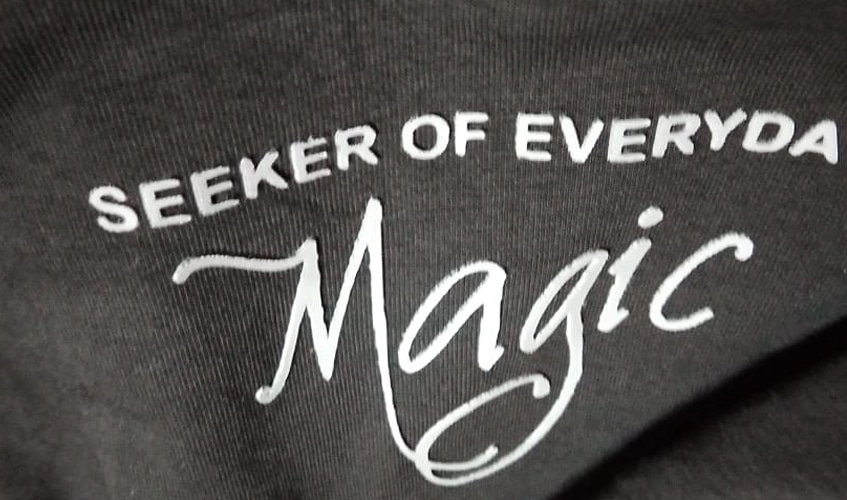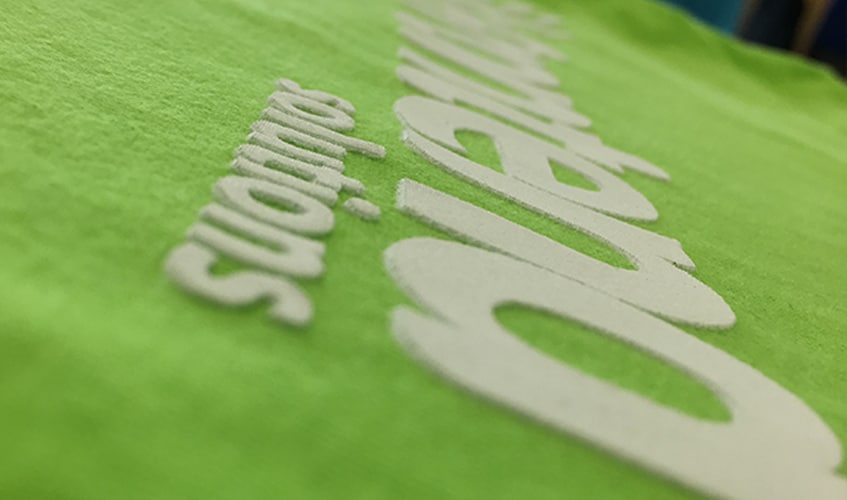Add special dimensions to your inks creating a really cool layered look!
High-density printing is all the rage in the world of t-shirts these days. More and more businesses are willing to spend extra bucks on custom high-density print t-shirts to help their brand shine and leave a lasting impression on the wearer.
It is a screen printing method that adds texture & depth to the artwork. Plastisol ink gets printed using a special screen that holds the ink within a limited area. It creates a print that rises up to 1/8″ above the surface of the fabric. Such an effect has a limit of one ink per garment and we cannot combine it with Foil or Discharge ink due to the heat needed to execute each of these methods.
High-Density inks cannot be used for halftone images or graphics with fine details. They seem to work best with solid and bold graphic areas such as text or symbols.

High-density screen printing has various options that you can use to customize your t-shirts & apparel further. It has several micron levels, which correspond to the amount the design needs to be raised up. Two hundred microns is the lowest level and gives a slight increase over traditional screen printing. We recommend going with at least 400 microns for a noticeable difference. You can also go for 600, 800, or even 1000 microns for a super cool look for your high-density printing.
Pros and Cons of High-Density Printing
If you are on the fence about whether high-density printing is right for you, we have listed out a few pros & cons to the method.
Pro: Opaque colors stand out
This is probably the easiest way to find if you want a clean, vibrant look to your logo or design. Use identical colors for both ink and fabric without worrying about a subtle appearance.
Con: It is not ideal for halftones
Do you want to create several specific colors in your design? High-density printing is not always suitable for matching the exact shadow and highlights colors.
Pro: Designs are clean and crisp
High-density inks have an outstanding clean finished product, suitable for big corporate events, promotional t-shirts, or team uniforms.
Con: Small details are complicated
If your design is extremely complex, you may not get the best effect. The multi-layer method is ideally good for clear-cut shapes that can serve as a base for the different layers of ink.
Pro: It’s more durable than alternatives
The hardened ink layers produce a durable look, which will last longer than techniques such as metallic ink printing or foil printing. This is especially useful if you need a reflective design, such as those with metallic techniques. To create a more stable look, select high-density ink with glitter.
Con: You need a sturdy fabric
Each coating of ink must be cured before it can be added on top of the next one. The curing method depends on the type of ink used in the process. Cotton or cotton-based fabrics are the best high-density printing materials. Some inks often adhere to sweat-wicking fabrics used in dance and sports uniforms.

Special effects Screen printing is growing as technology improves, and designers are pushing the boundaries of what the inks can achieve. We offer a range of specialty and conventional techniques for screen printing.
So, what do you think of custom high-density screen print on your apparel? If you have questions about this print or would like to order t-shirts with high-density print for your business, feel free to contact us at [email protected]
